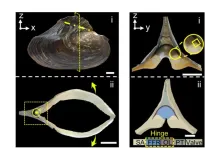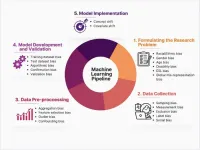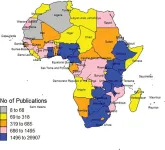(Press-News.org) In a new study, researchers from North Carolina State University used a computer model to understand how African swine fever (ASF) might spread among swine farms in the southeastern U.S. – and examined the effectiveness of existing response plans. They found that although control actions would help, an outbreak could still prove persistent and costly.
ASF is a highly contagious viral disease in pigs, with a mortality rate that can reach 100%. Additionally, infected pigs may not show symptoms before they die, potentially allowing the virus to spread before it is detected. The cost of a potential ASF outbreak in the U.S. has been estimated at $80 billion.
The researchers used an epidemiological model, called PigSpread, to look at the different ways a potential outbreak in the southeastern U.S. could unfold. The PigSpread model evaluates six transmission routes including between-farm swine movements, vehicle movements, and local spread, to model the dissemination of ASF.
The infection data used in this model came from the Morrison Swine Health Monitoring Project. Location, production type, capacity, between-farm swine movements and vehicle movement data from 2,294 swine farms in the southeastern U.S. was collected from collaborating swine production companies and was also fed into the model.
The researchers simulated the course of infection both with and without control strategies, varying the starting point of the outbreak. Overall, they ran approximately 230,000 different simulations, with each simulation occurring over a 140-day time period. They then averaged the results.
Between-farm movements accounted for 71% of disease transmissions in the model, with local spread and vehicular transmission both contributing about 14% each.
“The main route of transmission is of course moving animals between farms, but vehicles and local spread are also important in an outbreak scenario,” says Gustavo Machado, assistant professor of population health and pathobiology at NC State and corresponding author of the work.
“Local spread refers to wildlife movements, sharing farm equipment, or visitors who may have contaminated footwear or clothing,” Machado says. “But one very important variable here is vehicular transmission. This dissemination route has never been studied at a large scale, but here it has shown to be pivotal in disease spread.”
The model also showed that control actions, specifically a combination of quarantine, depopulation, movement restrictions, contact tracing, and enhanced surveillance, did have an impact. In simulations where these actions were implemented, secondary infections were reduced by up to 79% on average within the 140-day time frame. Twenty-nine percent of the simulations where all control strategies were implemented saw no more affected farms within that time period.
“While these results are promising, they are still a bit optimistic,” Machado says. “The model shows that policies we have in place would have a positive effect on an outbreak overall, but we need to further investigate this scenario to determine what exactly is required to get it under control. And the epidemic will likely last longer than 140 days even with these interventions.”
The work appears in Preventive Veterinary Medicine and was supported by the U.S. Department of Agriculture’s Animal and Plant Health Inspection Service under award AP22VSSP0000C004. The Morrison Swine Health Monitoring Project is a Swine Health Information Center (SHIC) funded project. NC State Ph.D. Candidate Abagael Sykes and NC State postdoctoral researcher Jason Galvis are co-first authors.
-peake-
Note to editors: An abstract follows.
“Estimating the effectiveness of control actions on African swine fever transmission in commercial swine populations in the United States”
DOI: 10.1016/j.prevetmed.2023.105962
Authors: Abagael Sykes, Jason Galvis, Gustavo Machado, North Carolina State University; Kathleen O’Hara, USDA-APHIS, Fort Collins, CO; Cesar Corzo, University of Minnesota St. Paul
Published: June 22, 2023 in Preventive Veterinary Medicine
Abstract:
Given the proximity of African swine fever (ASF) to the U.S., there is an urgent need to better understand the possible dissemination pathways of the virus within the U.S. swine industry and to evaluate mitigation strategies. Here, we extended PigSpread, a farm-level spatially-explicit stochastic compartmental transmission model incorporating six transmission routes including between-farm swine movements, vehicle movements, and local spread, to model the dissemination of ASF. We then examined the effectiveness of control actions similar to the ASF national response plan. The average number of secondary infections during the first 60 days of the outbreak was 49 finisher farms, 17 nursery farms, 5 sow farms, and less than one farm in other production types. The between-farm movements of swine were the predominant route of ASF transmission with an average contribution of 71.1%, while local spread and movement of vehicles were less critical with average contributions of 14.6% and 14.4%. We demonstrated that the combination of quarantine, depopulation, movement restrictions, contact tracing, and enhanced surveillance, was the most effective mitigation strategy, resulting in an average reduction of 79.0% of secondary cases by day 140 of the outbreak. Implementing these control actions led to a median of 495,619 depopulated animals, 357,789 diagnostic tests, and 54,522 movement permits. Our results suggest that the successful elimination of an ASF outbreak is likely to require the deployment of all control actions listed in the ASF national response plan for more than 140 days, as well as estimating the resources needed for depopulation, testing, and movement permits under these controls.
END
The National Football League and the NFL Players Association (NFLPA) announced today they are awarding a grant to Emory University researchers to study innovative, first-of-their-kind, alternative pain management methods that could benefit NFL players and society at large. The researchers will investigate mindfulness-based intervention in sports medicine injuries.
The $200,000 grant was awarded by the NFL-NFLPA Joint Pain Management Committee (PMC), which aims to facilitate research to better understand and improve potential alternative pain management treatments for NFL players.
Emory’s winning ...
Background
COVID-19 survivors may experience persistent neuropsychological disruptions such as lower satisfaction with life (SWLS), depression, and anxiety. While student-athletes are at low risk for severe COVID complications, the effect of COVID on mental health remains to be elucidated.
Objective
Compare patient-reported mental health outcomes for incoming collegiate athletes who did (COVID+) and did not (COVID-) have COVID-19.
Methods
79 COVID+ (79/178, 44.4%, 18.90±0.16 years) and 99 COVID- (99/178, 55.6%,18.95±0.16 ...
An international team of astronomers has drawn a temperature map of the dust drifting within one of the oldest spiral galaxies of the Universe which provides new insights into how fast the galaxy is growing. Until now researchers have only been able to measure the temperature of most distant galaxies in broad terms, without showing how temperatures vary in individual areas.
This research, described in a paper published today in Monthly Notices of the Royal Astronomical Society (MNRAS) shows unambiguous temperature variation within the distant galaxy indicating two distinct heat sources – a supermassive black hole at the centre of the galaxy, and the heat generated ...
Recently, flexible and foldable devices have developed at a dramatic rate. More and more foldable devices appear in people's lives. Long-term service requires the folded parts to endure repeated deformation which might cause fatigue damage to the devices. Consequently, the damage will affect the normal function of the devices. Inspired by the hinge of bivalve Cristaria plicata, which experiences hundreds of thousands of repeating opening-and-closing valve motions throughout the bivalve’s lifetime, a research team led by Prof. YU Shuhong collaborating with Prof. WU Hengan from the University of Science and Technology of China ...
In your coverage, please use this URL to provide access to the freely available article in PLOS Digital Health: https://journals.plos.org/digitalhealth/article?id=10.1371/journal.pdig.0000278
Article Title: Bias in artificial intelligence algorithms and recommendations for mitigation
Author Countries: Jordan, United States, Canada
Funding: The authors received no specific funding for this work. END ...
Article URL: https://journals.plos.org/globalpublichealth/article?id=10.1371/journal.pgph.0000544
Article Title: HIV research output in African Countries between 1986–2020
Author Countries: Nigeria, USA, UK
Funding: The authors received no specific funding for this work. END ...
Generative AI models such as ChatGPT, DALL-E, and Midjourney all have features that may distort human beliefs through their transmission of false information and stereotyped biases, according to Celeste Kidd and Abeba Birhane. In this Perspective, they discuss how research on human psychology can explain why generative AI could be particularly powerful in distorting beliefs. The capabilities of generative AI have been exaggerated at this point, they suggest, leading to a belief that these models exceed human capabilities. People are predisposed to adopt the information of knowledgeable, confident agents like generative AI ...
Tundra diversity, including plants, lichens and fungi, declined over a 15-year experiment in the Arctic due to warming temperatures mediated by the disappearance of sea ice, according to Eric Post and colleagues. However, the presence of large herbivores such as caribou and musk oxen slowed this decline, by affecting the plant understory with their different browsing behaviors, the researchers concluded. Their findings offer support for the idea that encouraging herbivore diversity in the tundra could temper some of the impacts of climate warming. Post et al. observed the interacting effects of warming temperatures, sea ice changes, tundra diversity and herbivore exclusion in ...
How does a mussel shell open and shut easily and without damage for hundreds of thousands of cycles during the bivalve’s lifetime? Such fatigue-resistant materials would be useful in electronics, aerospace and tissue engineering designs, where components need to operate repeatedly without failure. Xiang-Sen Meng and colleagues took a closer look at the hinge on the shell of the bivalve Cristaria plicata, and found that the answer lies in a combination of design and materials that resist brittle fracture over time. Microscopic observations by Meng et al. show that the hinge gets its ...
In this Policy Forum, Jeremy Sugarman and colleagues describe the risks that increasingly limited access to abortion may pose to clinical research participants and staff, one year after the U.S. Supreme Court’s decision in Dobbs v. Jackson Woman’s Health Organization. People who may become pregnant are already an understudied population in clinical research. The authors suggest that new laws restricting abortion access may lead to ethical, legal and practical problems that make the risk of conducting research with this population unreasonable ...


